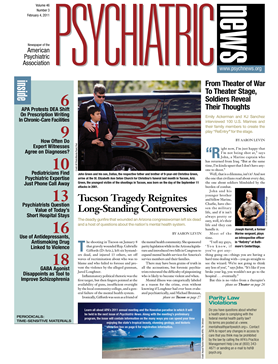“In theory, there's no difference between theory and practice,” Yogi Berra is alleged to have said. “In practice, there is.”
Successfully moving psychosocial research from the confines of the lab into real communities requires close attention to the process of program adoption, said Mark Greenberg, Ph.D., a professor of human development and psychology and director of the Prevention Research Center at Pennsylvania State University.
Greenberg sees a gap between the development of good preventive interventions to reduce drug and alcohol abuse or discourage other risky teen behaviors and their sustainable implementation in communities.
“Having all those evidence-based programs but not using them is the problem,” he told listeners at the Sixth World Conference on the Promotion of Mental Health and Prevention of Mental and Behavioral Disorders in Washington, D.C., last November.
One problem is transferring new research findings to community programs in ways that accurately replicate the researchers' approach and outcomes.
“But what good is fidelity if the interventions are not sustained in the real world?” he said.
Greenberg and several colleagues have spent the last decade researching ways to build sustainable programs in the real world.
One was the “Communities That Care” model, adopted in 127 towns in Pennsylvania in 1994.
“The usual way these things start is that someone gets a grant and then picks a program,” said Greenberg. “But just having good programs is a naïve idea.”
A better way is to identify the community's specific problems first and then build a program from the ground up to address those problems, he said.
Communities That Care began by mobilizing key leaders in each community (mostly small towns and rural areas) and teaching them about epidemiology and public-health approaches to youth problems. These leaders might have included the town mayor, school principals, health department officials, judges, mental health clinicians, social service workers, and so on. Working together, they then created long-term prevention plans tailored for each community.
The state provided only three years of funding. After that, the localities had to develop sufficient support for the programs to keep them going.
Outcomes were generally positive. Students showed less delinquency, got better grades, and exhibited less risk for drug or firearms misuse, although differences in alcohol use were not significant.
Greenberg and colleagues followed each program for six to eight years after state funding ended. They found four factors that explained why two-thirds of the programs were still in action after that time.
On the most basic level, much depended on how well the local board leaders of the program worked together, what Greenberg called “positive team dynamics.” Second, the closer the program hewed to the original model in the first two years, the more likely it was to survive.
Third, effective planning to sustain the program was critical from the start. One tactic project leaders adopted was picking the team's weakest skill each year and working to improve that.
Finally, the better boards did a good job of managing change within their own ranks. There was an annual 15 percent to 20 percent turnover, and successful boards made good choices in selecting new members and in educating them and bringing them up to speed.
“You have to think about what kind of people you need on board,” said Greenberg. “Maybe one year you need to add the expertise of the police chief, and the next year you might want a priest.”
Communities That Care built its model from scratch. Greenberg's team is also in the midst of studying a slightly different approach as well, one that makes use of an existing science-based knowledge transfer system.
PROSPER (PROmoting School-community-university Partnerships to Enhance Resilience) unites land-grant university faculty and cooperative-extension staff, local school personnel, and family and youth-service providers in the community.
This project covers 11,000 sixth and seventh graders in Pennsylvania and Iowa. Programs were allotted two years of funding, then had to fund their own services.
The local groups were offered a menu of evidence-based youth and family interventions to improve problem solving and delay the initiation of alcohol and drug use and reduce consumption if those substances are used.
Greenberg's research team is tracking local needs assessments, implementation quality, partnership functioning, and intervention outcomes.
One impediment to sustainability in some PROSPER communities appears to be poverty, as measured by the federal poverty level or free school lunch program rates, he said. Poorer communities may have problems with social cohesion or with service funding and delivery, leaving them less ready to begin and sustain prevention programs, he speculated.
Poor, less-prepared communities can adopt these programs, but they need more time, more technical assistance, and more training in team building and interagency communication to bring them up to speed, said Greenberg.
“To improve public health, we must think not so much about evidence-based programs, but about how we act as communities together to implement them,” he concluded.

